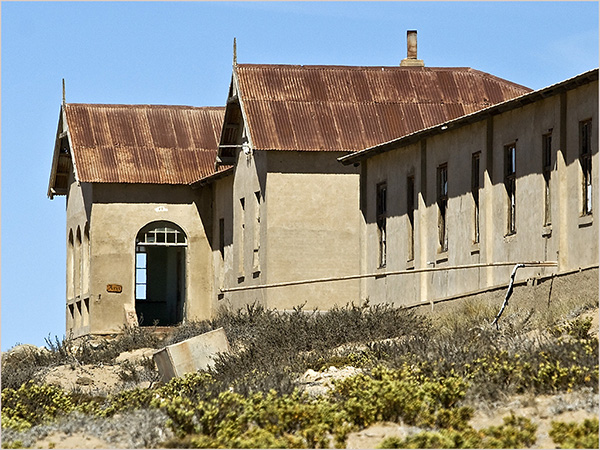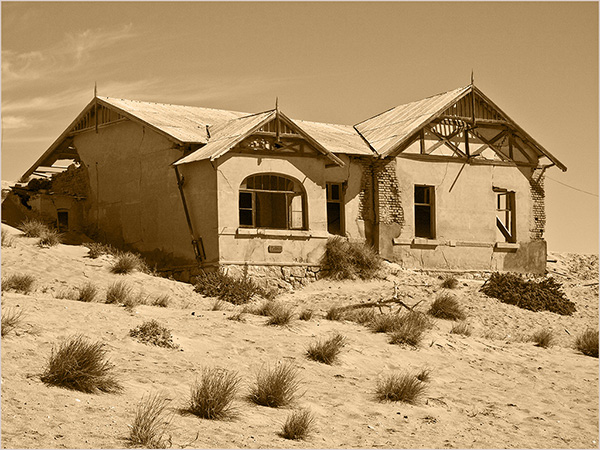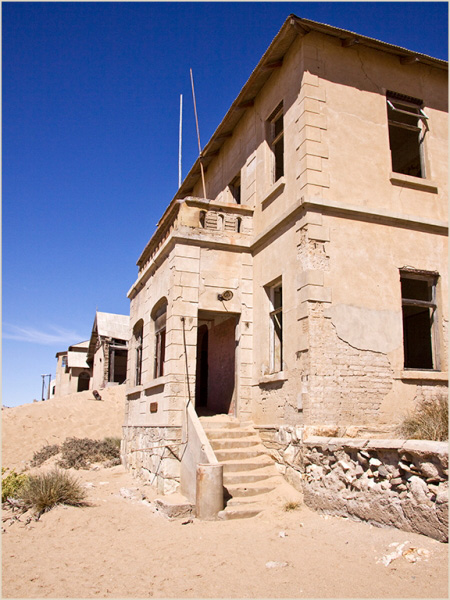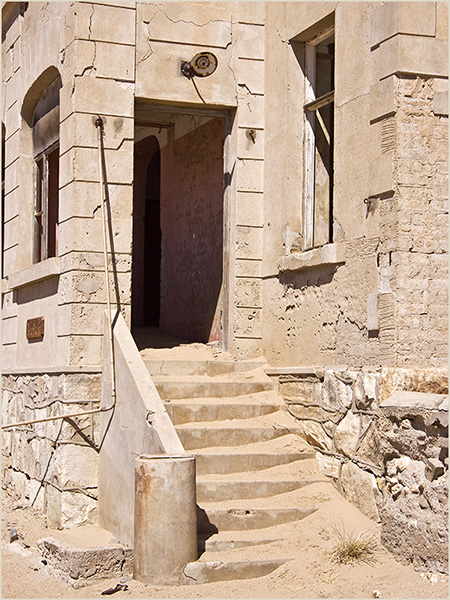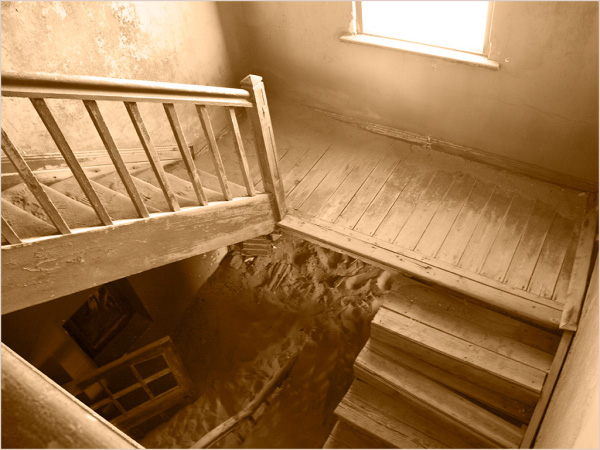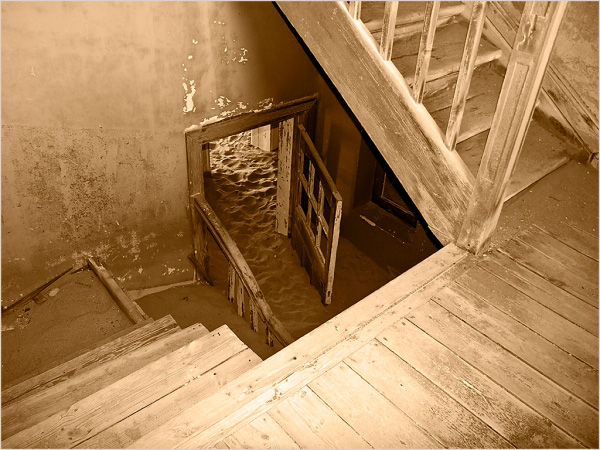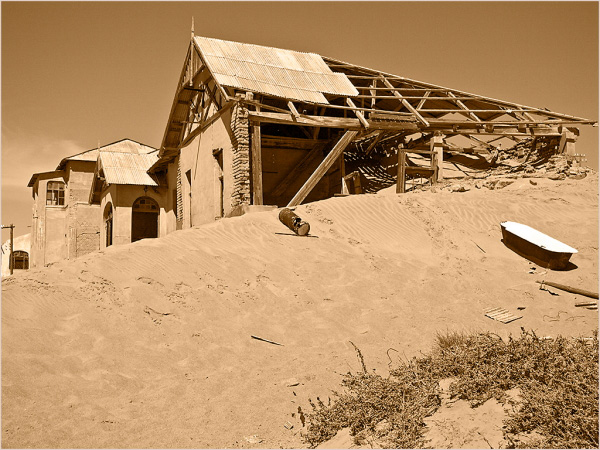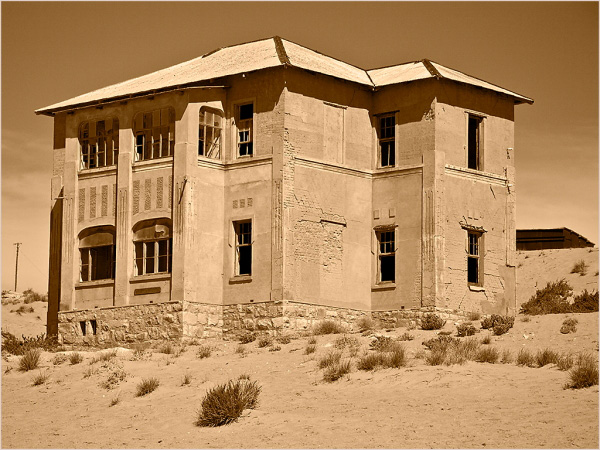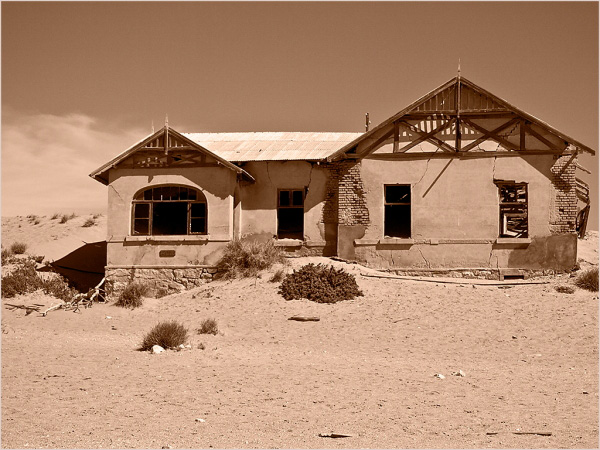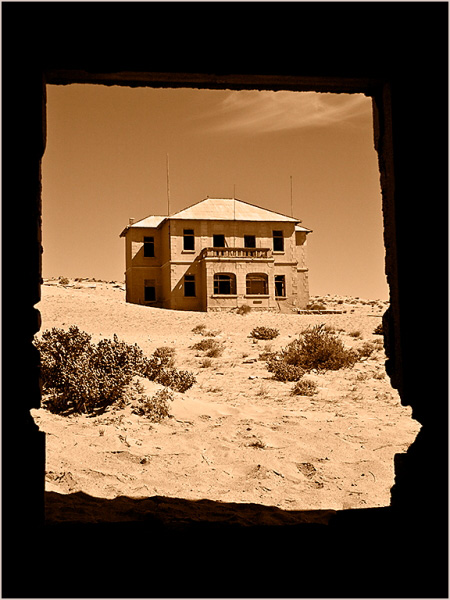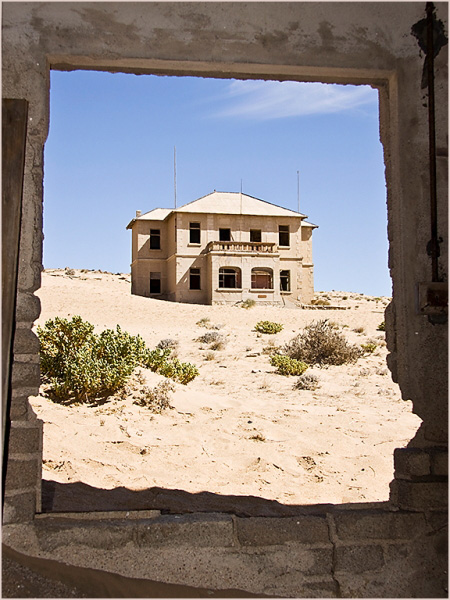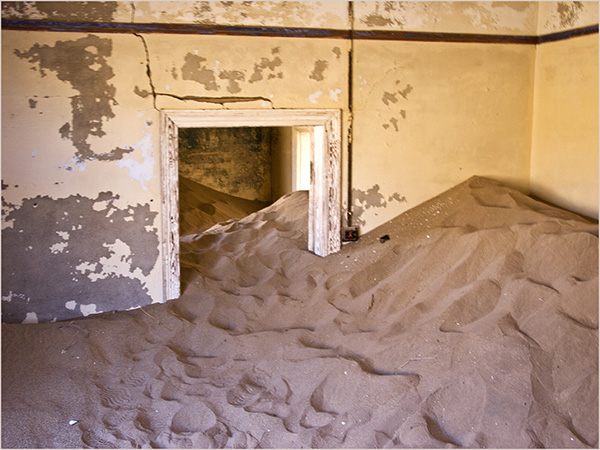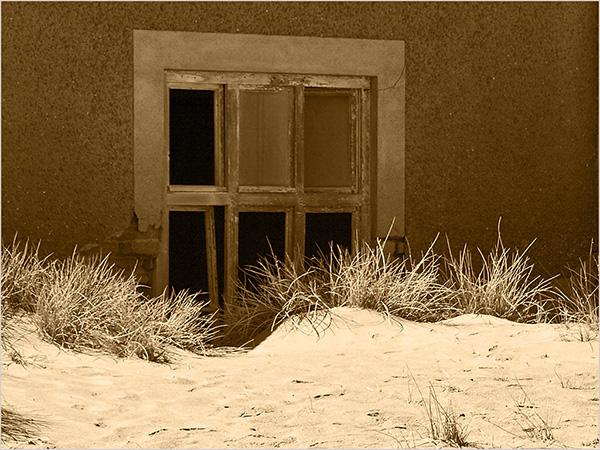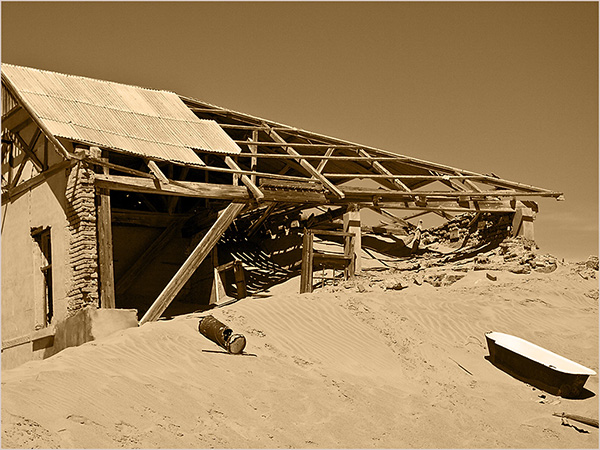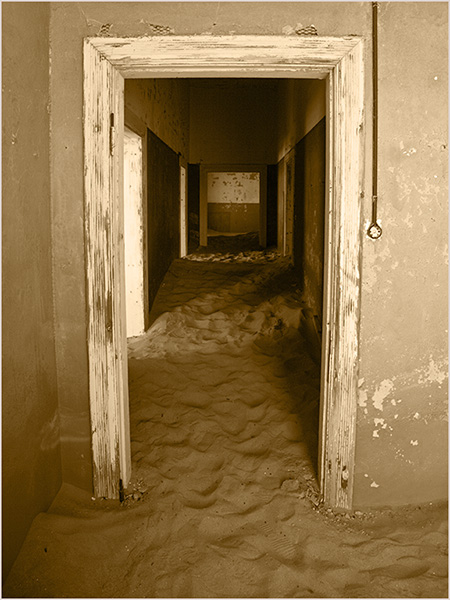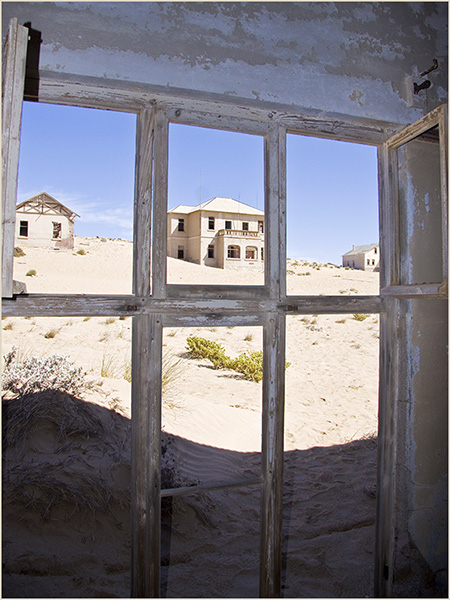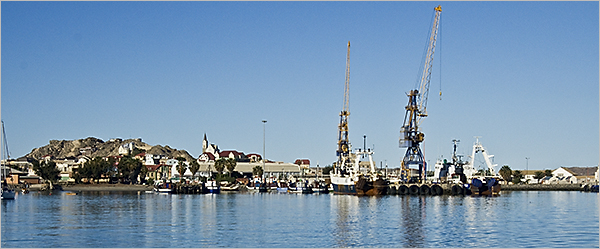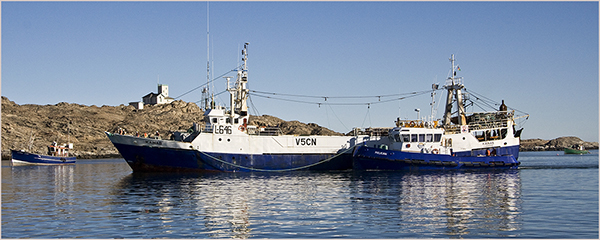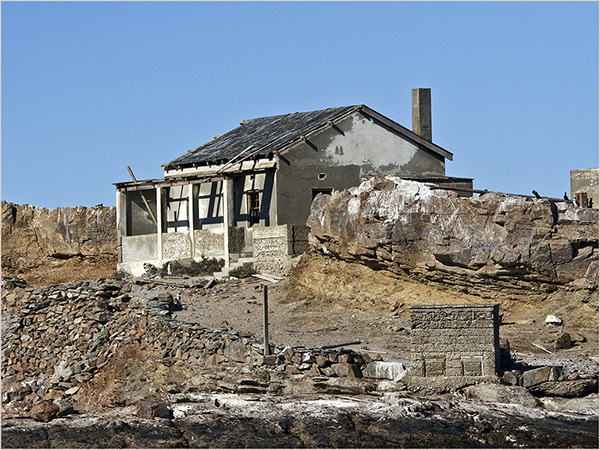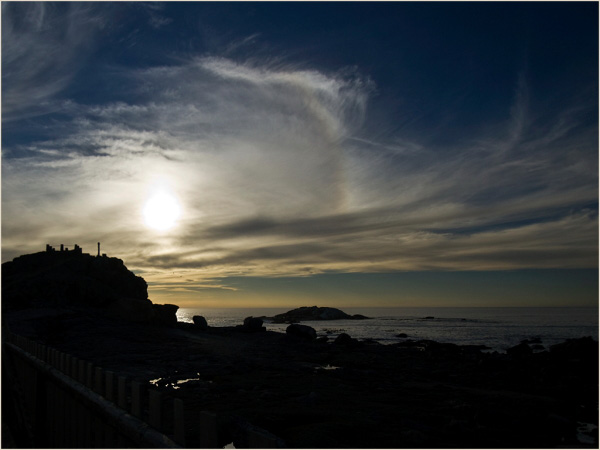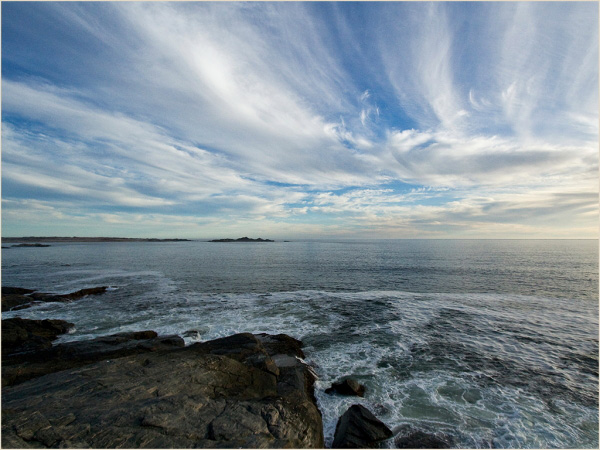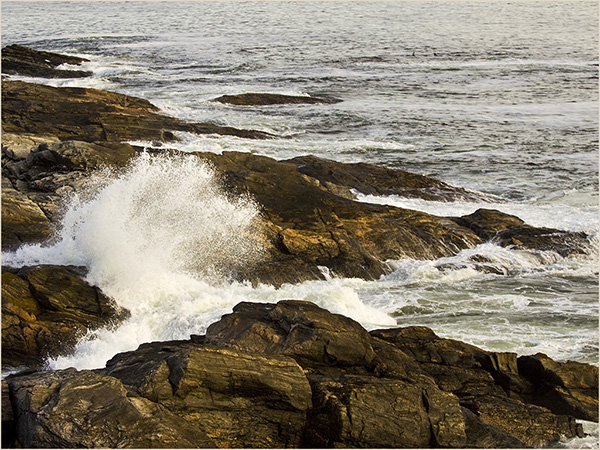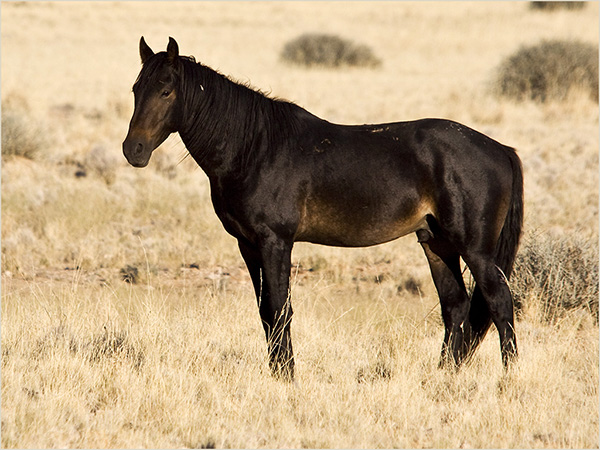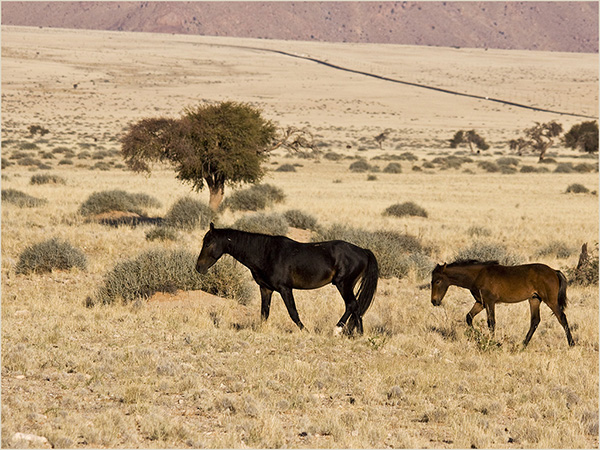

I have changed some of the photos to monochrome, as I like the antique look of the photos better.
Kolmanskop
was originally called Kolmanskuppe. Today it is a ghost town, but it was the first mining town built
in the Namib, when diamonds were discovered in the vicinity in 1908. The mine was closed in 1943 and
the town was abandoned to the elements. On some of the photos you will see how the sand dunes took over
and how sand was blown into the buildings. Some of the buildings were restored today. Only guided tours
are permitted. Kolmanskop is about 10 kilometers inland from Lüderitz.
|
















Lüderitz
is a small town between the desert and the ocean and in the south of Namibia. It is
also a harbour town and the smallest of the two harbour towns in Namibia. I didn't take many photos in
Lüderitz, as we only had about 2 hours to explore the town on foot. My camera equipment is too heavy
and therefore I decided to stay with our tour truck.
|





|
We also took a boat trip from Lüderitz to Hallifax Island to see the Jackass Penguins. Ghwano was also
harvested in the olden days and this deserted building was part of that era.
|


|
This is the place where Bartholomeu Diaz erected a cross in 1488. A replica now stands on the spot. This
place is known as Diaz Point.
|


|
The photo above and the two photos below were taken from Diaz Point.
|



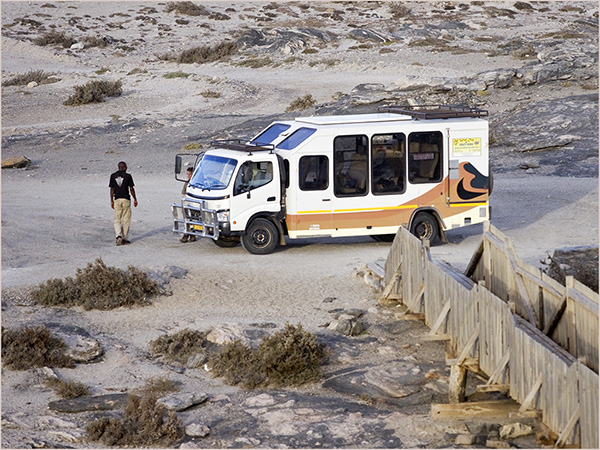 |
|
This is our our truck at Diaz Point.
|
|



These are the famous desert horses of the Namib. If one is lucky, they can be seen from the road on one's
way to Lüderitz.
These horses become adapted to an existence with very limited water. Some people
think they are the descendants of the horses used by the German cavalry during the First World War. Another
theory is that they originally came from a horse farm that used to be run by a German Barron, in the
very early colonial days.
|



Visitors since
9 September 2009
|
|
|
|
|
